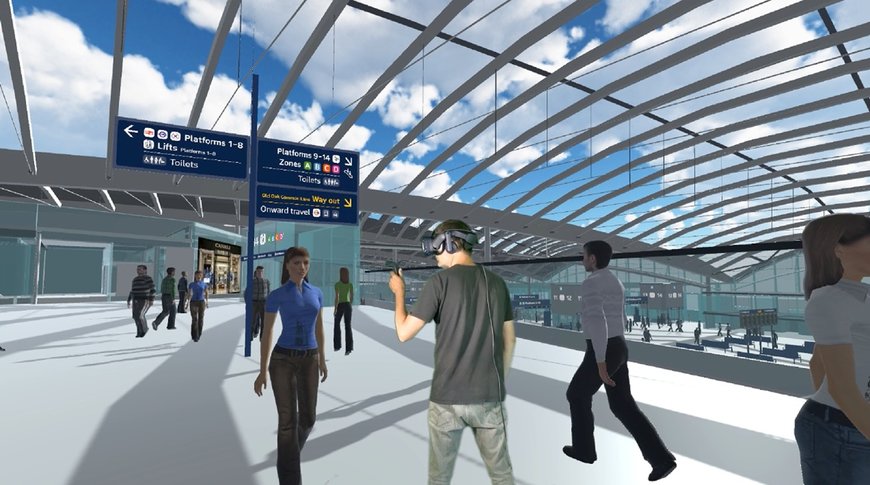Virtual Reality brings HS2 station to life years ahead of opening
In an innovative world-first, virtual reality, eye-tracking and emotion-sensing technology is being developed in combination and being used to develop how passengers will navigate their way around the new HS2 station at Old Oak Common.

- World first tech combines virtual reality with eye-tracking and emotion-sensing software to design HS2’s station of the future
- Technology enables station designs to be tested and refined before building starts
- Ambition to achieve a stress-free passenger experience in HS2 stations
As part of its innovation programme, HS2 Ltd is working with design & technology SME CCD Design & Ergonomics and station designer WSP to develop efficient and stress-free “wayfinding” for the quarter of a million people who will use the new 14-platform super-hub in north west London each day.
The successful deployment of the cutting-edge innovation in developing HS2’s station at Old Oak Common offers the potential for the technology to be used to design other HS2 stations, as well as other great buildings that have to manage large numbers of people efficiently, including sports venues and concert halls.
Wearing VR headsets fitted with eye-tracking and emotion-sensing technology, three sample groups drawn from members of the travelling public will enter a virtual version of the giant new station.
Once in the digital virtual reality, these passengers of the future will be asked to navigate their way around Old Oak Common to reach meeting points, platforms and to change between HS2 and Crossrail services using the signage included in the current design.
In addition, the team will dedicate a further session to passengers whose mobility is impaired to explore what further assistance they might need to navigate the station.
Eye-tracking technology fitted to VR headsets will monitor in detail how the eye is drawn around the station’s interior, and whether there are any distractions that might contradict or confuse, all of which could hamper easy and stress-free movement.
This will be paired with emotion sensing software that observes the wearer’s facial expressions and monitors heart rate changes caused by the visual stimulus of experiencing the station in virtual reality.
The data collected by CCD will enable HS2 Ltd and station designers to assess and if necessary, refine designs to help Old Oak Common passengers move smoothly and efficiently around the 100,000 square metre rail interchange station.
HS2 Ltd innovation manager Heather Donald said:
“The HS2 super-hub at Old Oak Common is the largest single-build station to be built in the UK. Up to quarter of a million passengers will use it to connect between HS2, Great Western and Elizabeth line trains each day, so it is vital that its design is fine-tuned to deliver a stress-free step change improvement in the passenger experience.
“Informative and clear signage is a prerequisite to ensuring that people using the station and changing between services can move with intuitive ease through OOC . We’ve taken an innovative approach to use cutting edge technology to ensure we have it right years before the station opens.”
CCD Design & Ergonomics MD David Watts, said:
“Wayfinding is an immersive, multi-sensory task. Up until now we’ve not had the tools to fully test our designs with real people at the early stages of design. Developing this tool will give the project far greater scope to get the design right while it’s all still on the drawing board.
“We are also able to explore other ways in which immersive tech can help design from improving accessibility, testing ideas for how digital technologies can assist the experience, assessing the right location for commercial units or advertising or helping staff simulate how they will operate the station.”
Kevin White, Technical Director, Stations at WSP, said:
“With WSP being involved in Old Oak Common’s design for the past three years, we have been able to work with HS2 and CCD to visualise the station in a full virtual environment. The process has brought immediate benefits to the wayfinding that will be fed back into the design, and it has become apparent how this technology can help in many ways throughout the design, construction and operational stages of the station.”
www.hs2.com

